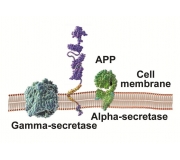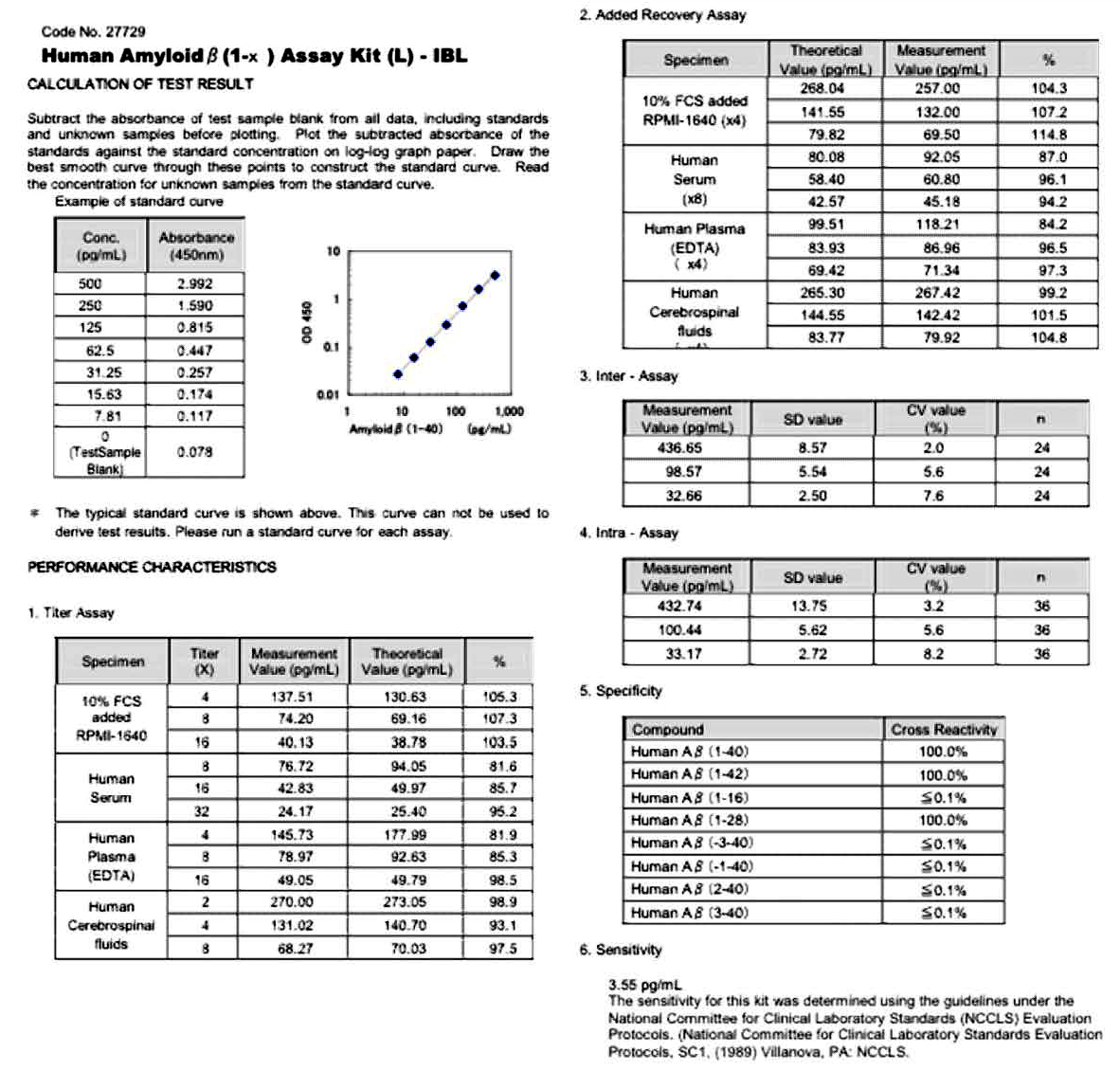HUMAN AMYLOID BETA TOTAL 1-x ELISA KIT (27729: kw. AB1-x, beta-amyloid 1-x, ABETA
 Click to enlarge |
|
Amyloid-Beta 1-x ELISA Kit (Human Specificity; Detects Abeta1-40 & Abeta1-42; 3.55pg/ml Sensitivity, 96T)
Sensitive and selective colorimetric ELISA kit to ABeta 1-x with assay range 7.81-500 pg/ml, 3.55 pg/ml sensitivity. Highly selective to amyloid-beta 1-x (see data below). This ELISA kits employs a monoclonal capture antibody that recognizes the N-terminus and a monoclonal detection antibody that binds near amino acid residue 20 in amyloid-beta: This ELISA kit detects both Abeta1-40 and Abeta 1-42.
Lead time estimate: 2 weeks
Specifications:
-
Complete ELISA kit in sandwich format. Colorimetric detection at 450 nm.
-
The ELISA plate is coated with an affinity purified monoclonal antibody that recognizes the N-terminus, and a monoclonal detection antibody that binds near amino residue 20. This kit detects both Abeta40 and Abeta42.
- The kit detects amyloid-beta 1-x in EDTA-plasma, cerebrospinal fluids, serum, cell culture media or brain tissue extract.
-
Incubation times: Samples with plate; overnight. Detection antibody: 1 hr
- Assay range: 7.81 - 500 pg/ml. Sensitivity: 3.55pg/ml
Protocol Overview
Background on Amyloid-Beta (1-x)
Amyloid-beta (Abeta) is generated through amyloid precursor protein (APP) cleavage by secretases. Beta-secretase cleaves an extracellular portion of APP and frees a soluble portion. Gamma-secretase cleaves APP within the transmembrane domain, creating amyloid-beta (Aβ) isoforms with lengths between 36-43 amino acid residues. The prevailing isoforms of Amyloid-Beta are Aβ40 and Aβ42. Aβ40 is the most widespread amyloid-Beta (Aβ) isoform, while Aβ42 is more fibrillogenic and is the principal Abeta peptide associated with Alzheimer’s disease.
 Methods Overview
Methods Overview-
Equilibrate plate to RT
-
Add sample to plate, incubate overnight
-
Add detection antibody, incubate 1 hr
-
Add color reagents, 30 min
-
Add stop solution. Measure OD at 450nm
Amyloid-beta 1-x ELISA Kit Validation Data

References
-
Selkoe DJ. Normal and abnormal biology of the -Amyloid precursor protein. Annu. Rev. Neurosci. 17: 489-517, 1994.
-
Wang R, Sweeney D, Gandy SE, and Sisodia SS. The profile of soluble amyloid protein in cultured cell media. J. Biol. Chem. 271: 31894-31902,1996.
-
Saido T.C., Iwatsubo T., Mann D.M.A., Shimada H., Ihara Y., and Kawashima S. Dominant and differential deposition of distinct -amyloid peptide species, A N3(pE), in senile plaques. Neuron 14, 457-466, 1995.
Storage: 4oC, 1 year
Safety: Stop solution contains acid. Avoid contact, wear eye protection.
Shipping: Overnight delivery with styrofoam box and ice packs. International delivery is also available: Please inquire for costs.
 Products
Products Manuals
Manuals












 ELISA Kit-80x80.jpg)


